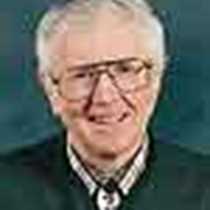Astoria, Oregon
When the swells of the Pacific lifted Sea Lion at 7 a.m. our 475 mile journey in the wake of Lewis and Clark down the Snake and Columbia rivers was complete.
It was a wild, windy setting. Cape Disappointment appeared and faded in shrouds of mist. Its lighthouse, with its short red and long white recognition flash, is the oldest on the West Coast. The cape and lighthouse have been the mariners’ guides over the notorious Columbia River Bar since 1856. Capt. Jeff Kalbach alerted us to sit and hold on as he turned the ship. We briefly felt the ship rock broadside to swells that roll unfettered from here for 8,000 miles to Japan.
Our morning berth was beside the Columbia River Maritime Museum in Astoria where a major exhibit is a U.S. Coast Guard 44-foot self-righting and self-bailing motor lifeboat that saw 20 years of service on this coast before retirement. On one occasion, seas were so steep it pitch poled end for end. The lifeboat is displayed entering such a wave while rescuing a fisherman. A sound track with the roar of wind and surf bolsters the exhibit. In the lee of Cape Disappointment is the Coast Guard training station where they bring handpicked young helmsmen for lifeboat rescue handling.
At Fort Clatsop, where the Corps of Discovery built a 50-foot square log structure, we examined the seven rooms that held all 31 men and Sacajawea and little Pomp through the 1805-06 winter. When they started homeward in mid-March they were weary from the rain (all but six days), a diet of boiled elk venison and cramped living. But Capt. Clark said for all that they lived as well as could be expected.
Astoria is situated along Coxcomb Hill with sweeping views of the Columbia River estuary and Youngs Bay. On the highest point, where we went after lunch, the Northern Pacific Railroad and heirs of John Jacob Astor erected the Astor Column in 1925. An Italian artisan carved and painted the scenes that spiral upward 125 feet to record the history of Astoria. The scenes begin with the Chinook tribe who met the first white fur traders, including Capt. Robt. Gray in the Columbia Rediviva out of Boston in 1792.
To explore Astoria independently or to dabble our toes in the Pacific surf was the day’s final choice. Some chose to walk that lonely beach where northbound shorebirds probed the wet sand. Dunlins in fresh breeding plumage—black bellies and russet backs—dominated the flocks. One guest located a dead sea lion which on closer inspection proved to be a northern fur seal that died in migration to its Pribiloff Island rookery.
A mix of gulls: western, herring, glaucous, glaucous-winged and California, picked over masses of deep-blue “jellies” carried ashore on storm winds. These pelagic invertebrates have a transparent triangular sail that carries them over the sea surface. Each is a floating hydroid colony called Velella velella or by-the-wind sailor.
When the swells of the Pacific lifted Sea Lion at 7 a.m. our 475 mile journey in the wake of Lewis and Clark down the Snake and Columbia rivers was complete.
It was a wild, windy setting. Cape Disappointment appeared and faded in shrouds of mist. Its lighthouse, with its short red and long white recognition flash, is the oldest on the West Coast. The cape and lighthouse have been the mariners’ guides over the notorious Columbia River Bar since 1856. Capt. Jeff Kalbach alerted us to sit and hold on as he turned the ship. We briefly felt the ship rock broadside to swells that roll unfettered from here for 8,000 miles to Japan.
Our morning berth was beside the Columbia River Maritime Museum in Astoria where a major exhibit is a U.S. Coast Guard 44-foot self-righting and self-bailing motor lifeboat that saw 20 years of service on this coast before retirement. On one occasion, seas were so steep it pitch poled end for end. The lifeboat is displayed entering such a wave while rescuing a fisherman. A sound track with the roar of wind and surf bolsters the exhibit. In the lee of Cape Disappointment is the Coast Guard training station where they bring handpicked young helmsmen for lifeboat rescue handling.
At Fort Clatsop, where the Corps of Discovery built a 50-foot square log structure, we examined the seven rooms that held all 31 men and Sacajawea and little Pomp through the 1805-06 winter. When they started homeward in mid-March they were weary from the rain (all but six days), a diet of boiled elk venison and cramped living. But Capt. Clark said for all that they lived as well as could be expected.
Astoria is situated along Coxcomb Hill with sweeping views of the Columbia River estuary and Youngs Bay. On the highest point, where we went after lunch, the Northern Pacific Railroad and heirs of John Jacob Astor erected the Astor Column in 1925. An Italian artisan carved and painted the scenes that spiral upward 125 feet to record the history of Astoria. The scenes begin with the Chinook tribe who met the first white fur traders, including Capt. Robt. Gray in the Columbia Rediviva out of Boston in 1792.
To explore Astoria independently or to dabble our toes in the Pacific surf was the day’s final choice. Some chose to walk that lonely beach where northbound shorebirds probed the wet sand. Dunlins in fresh breeding plumage—black bellies and russet backs—dominated the flocks. One guest located a dead sea lion which on closer inspection proved to be a northern fur seal that died in migration to its Pribiloff Island rookery.
A mix of gulls: western, herring, glaucous, glaucous-winged and California, picked over masses of deep-blue “jellies” carried ashore on storm winds. These pelagic invertebrates have a transparent triangular sail that carries them over the sea surface. Each is a floating hydroid colony called Velella velella or by-the-wind sailor.




